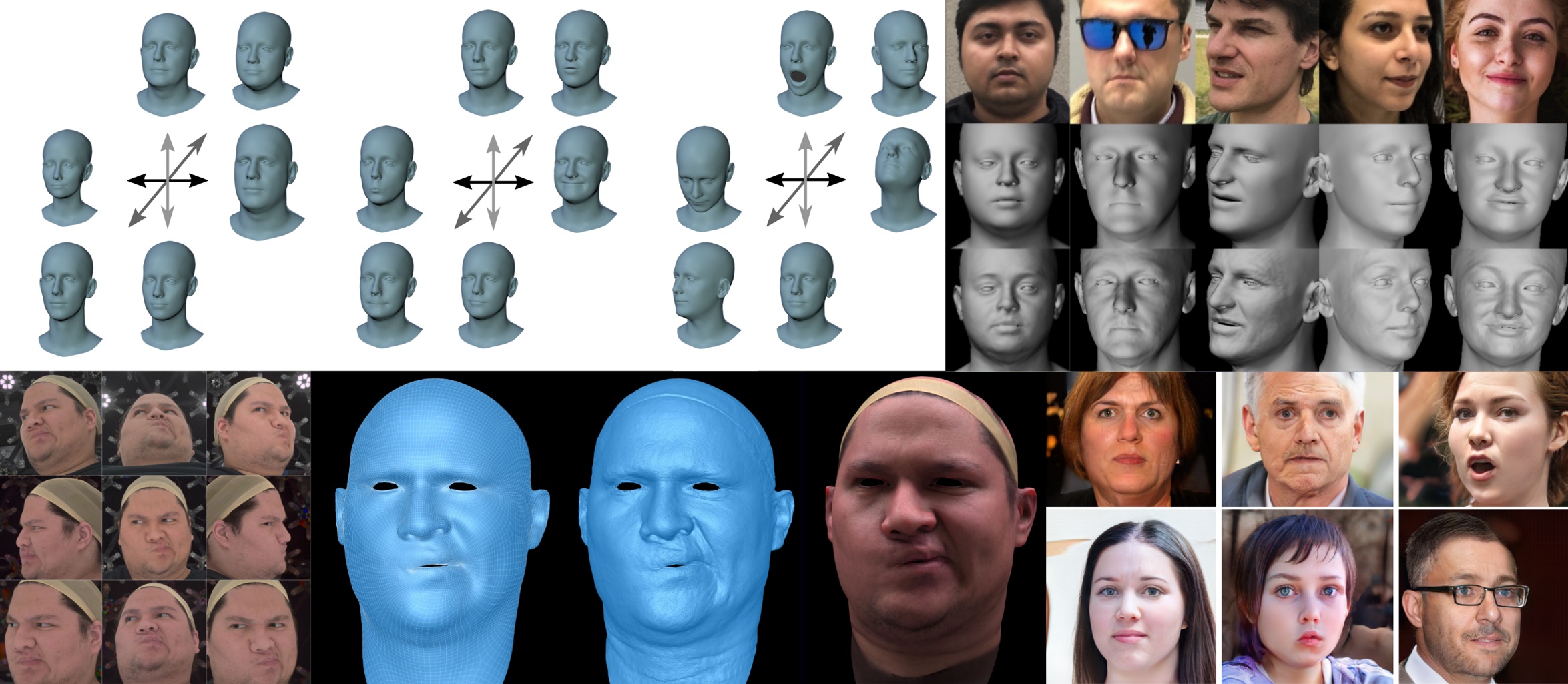
Analysis and Synthesis of 3D Faces: Top left: FLAME [ ] captures 3D face shape, pose, and expression shape variations. Top right: DECA [ ] reconstructs animatable 3D faces from 2D images with FLAME’s parameter control. Bottom left: ToFu [ ] reconstructs high-fidelity 3D faces from calibrated multi-view images. Bottom right: GIF [ ] generates realistic face images with FLAME’s parameter control.
Facial shape and motion are essential to communication. They are also fundamentally three dimensional. Consequently, we need a 3D model of the face that can capture the full range of face shapes and expressions. Such a model should be realistic, easy to animate, and easy to fit to data. See [ ] for a comprehensive overview of different facial representations.
To that end, we train an expressive 3D head model called FLAME from over 33,000 3D scans. Because it is learned from large-scale, expressive data, it is more realistic than previous models. To capture non-linear expression shape variations, we introduce CoMA [ ], a versatile autoencoder framework for meshes with hierarchical mesh up- and down-sampling operations. Models like FLAME and CoMA require large datasets of 3D faces in dense semantic correspondence across different identities and expressions. ToFu [ ], a geometry inference framework that facilitates a hierarchical volumetric feature aggregation scheme, predicts facial meshes in a consistent mesh topology directly from calibrated multi-view images three orders of magnitude faster than traditional techniques.
To capture, model, and understand facial expressions, we need to estimate the parameters of our face models from images and videos. Training a neural network to regress model parameters from image pixels is difficult because we lack paired training data of images and the true 3D face shape. To address this, RingNet [ ] directly learns this mapping using only 2D image features. DECA [ ] additionally learns an animatable detailed displacement model from in-the-wild images. This enables important applications such as creation of animatable avatars from a single image. Our NoW benchmark enables the field to quantitatively compare such methods for the first time.
Classical rendering methods can be used to generate images using FLAME but these look unrealistic due to the lack of hair, eyes, and the mouth cavity (i.e., teeth or tongue). To address this, we are developing new neural rendering methods. GIF [ ] combines a generative adversarial network (GAN) with FLAME’s parameter control to generate realistic looking face images.
